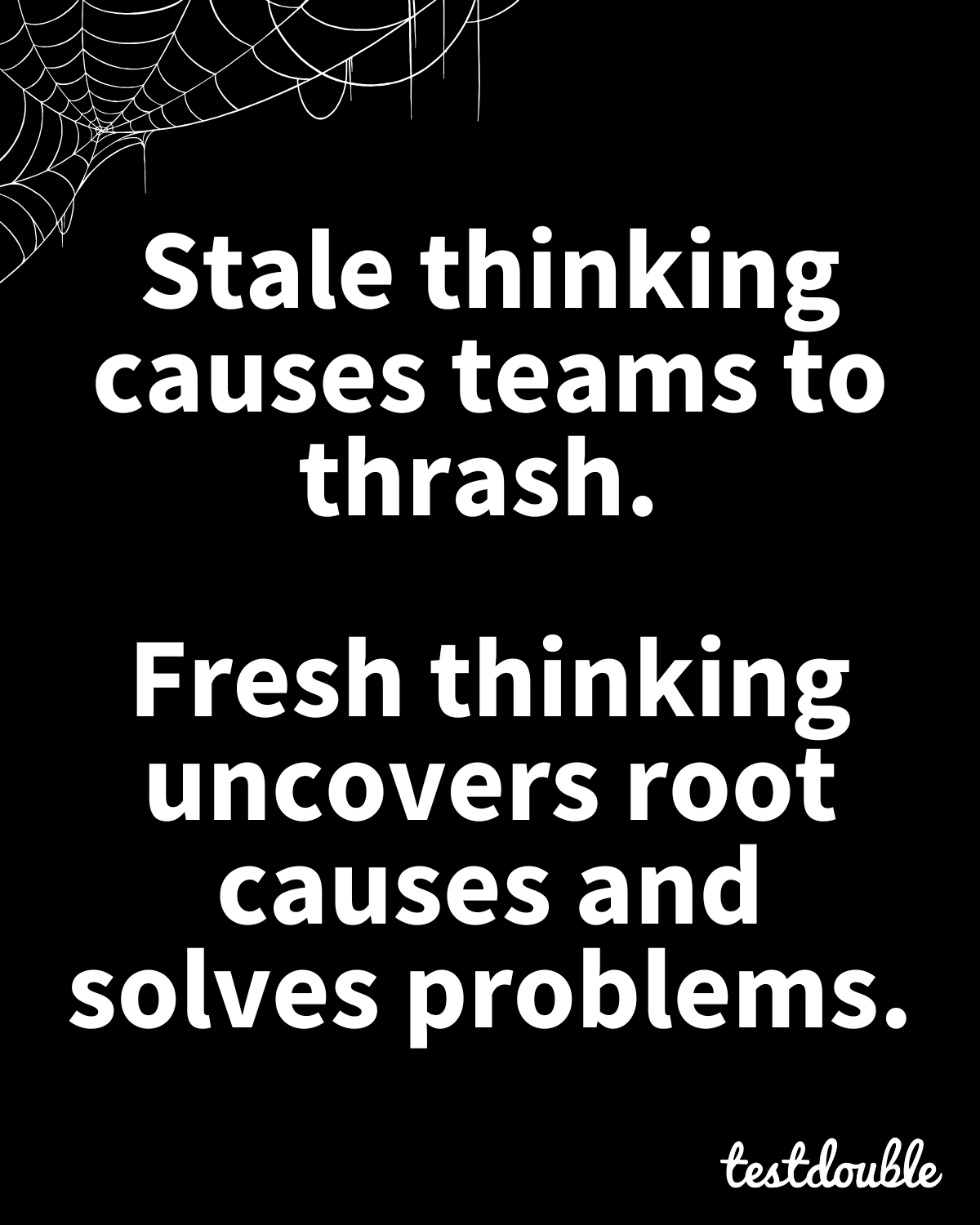Audentes fortuna iuvat is a Roman proverb that translates into fortune favors the bold.
I regularly come back to this proverb, as someone who lived through every economically uncertain time since the 1980s and served as a consultant for 30 years of that time span. It’s easy to be a leader in strong and steady markets, but much harder during bumpier times. The businesses that succeed nearly always take a thoughtful, but proactive approach.
There are several types of behaviors I’ve seen.

Uncertainty breeds fear.
This is the most common experience for most businesses in the face of uncertainty. Businesses will react by taking a defensive balance sheet strategy that leads to stockpiling cash, reducing long-term commitments, refinancing debt, etc. This also leads to reducing people, projects, and programs. Even worse, it may lead to paralyzed decision-making due to suddenly restricted budgets but no clear way of prioritizing the work.
A client of mine followed this strategy, cut all projects and started to proactively reduce staff in order to build up cash for a prolonged rough patch. So, when their business returned sooner than expected, they were unprepared for the surge and missed a critical window to grow share while they spent time reengaging projects and rehiring people.
“Damn the torpedoes, full speed ahead!”1
Some businesses take this approach. They will react by focusing on growth oriented investments. We will brute force ourselves through this by gaining share through offensive tactics. You might see a targeted approach to acquiring business from new markets, increased focus on lead generation, or the creation of new products. This approach relies completely on a company's ability to enable switching behavior, but It doesn’t put contingencies in place if Plan A fails.
I worked at a company that ignored the slowing market and simply invested more and more money into sales and marketing without analyzing the signals we were receiving. The return from that investment was far lower than expected, eventually leading to the firm running out of cash.
1 Quote attributed to David Farragut
"Chaos brings opportunity."2
This is how strategic businesses think. Businesses leverage this hybrid approach to prioritize activities to focus on the future, realizing that any disruption to the market is temporary and that being positioned for growth when needed is a great first-mover advantage. The key to enabling this strategy is the ability to understand the benefits of different investments in both defensive and offensive activities. This is where the C-Suite gets stuck, as they are not armed with the right information to enable making this call.
One of my clients paused known vanity projects and put that budget against assessing how they could reduce their operating expense over the long run. Additionally, they reviewed every project thoughtfully to assess expected ROI while keeping an eye on opportunities to grow the business opportunistically. They used the time to redirect projects into addressing process inefficiencies and technical debt which lowered their ongoing operating expense significantly. Opportunistically, they worked with a consultant to identify and buy a smaller company that was in distress to expand and diversify their customer base. When the market rebounded they were able to meet the increased volume without any issues and significantly expanded their addressable market.
2 Loose translation from The Art of War by Sun Tzu
While this HBR article is relatively old, it does speak to the benefits of the third (hybrid) approach and specifically an optimized version of it. The focus is to use uncertainty to optimize expenses (not randomly cut staff or projects) and look for higher probability opportunities to grow the business. What the article won’t be able to tell you is what to optimize and where to grow…
So what’s the smart way to do it? Given my background in IT consulting, I’ll look through that lens.
"You cannot solve a problem with the same mind that created it."3
My suggestion is always: spend a little money upfront before you commit to a much larger investment so you don’t fall into Conway’s Law4 when you are operating within the existing system.
From an optimization perspective, are you spending your money wisely on infrastructure, people, and development? This may seem simplistic, but it is much harder to determine yourself.
In the end, it will pay greater dividends to have an outside firm perform an assessment to review how you are using your infrastructure, see if your existing code base’s technical debt is driving up support and maintenance costs, and determine whether or not your entire tech estate could be simplified.
3 Attributed to Albert Einstein
4 “Organizations, who design systems, are constrained to produce designs which are copies of the communication structures of these organizations.”, Melvin Conway (1967)
"If you don't cannibalize yourself, someone else will."5
The best way to cut costs is to reimagine how your company operates. In other words, disrupt yourself. This covers different ways to meet customer needs and ways to optimize your costs to deliver your product or service.
To get a fresh perspective, it’s again beneficial to have someone outside of the company help you assess your projects and programs. Can you definitively determine what the quantifiable metrics of success are with a focus on outcomes rather than outputs? By prioritizing meaningful outcomes: measurable changes in customer behavior, business performance, and market position. This enables a comparison of opportunities based on their ability to produce these outcomes, assessing expected ROI, customer value, and strategic impact, while thoughtfully considering uncertainty.
But, who does this kind of deep strategy to execution work? They are called product managers. An external Product Manager can be an accelerator to disrupting yourself by bringing a fresh, unbiased perspective. While they may not know your business as intimately, their core strength lies in deeply understanding your customers’ needs, motivations, and pain points and tying them back to your business cost and growth opportunities.
An external product manager challenges explicit and implicit assumptions by continuously validating ideas directly with users through a structured product discovery process that includes a variety of tools and techniques to ensure solutions deliver genuine and measurable customer value. Great product managers will also use their experiences from dozens of companies and products to give you a fresh perspective to ensure that your own self-disruption is evidence-based, customer-informed, and business-aligned.
If you can do both of these assessments at the same time, you can optimize spending. Amortize your IT spends through both R&D and capital cost amortization, and lower your operating costs to squeak out even more profitability. Bonus: This is a great way to impress your CFO and get on their radar in a good way.
While it may be a bold move to focus on investing in both optimizing operating expenses (not just cutting costs), and growing the business, you will give yourself the best opportunity to survive the rocky times and thrive after.
5 Attributed to Steve Jobs












